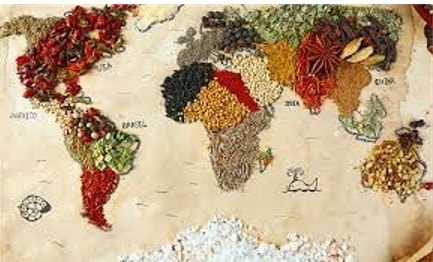DIVERSITY & INCLUSION – TOP 3 SIMPLE, EFFECTIVE SOLUTIONS
Ah! I know why you clicked on this link 😊 Of course, we all are looking for simple and effective solutions in this complex world!
Well, simple solutions start with asking yourself some simple questions 😊 So, here you go…
what is diversity & inclusion all about? Is it recruiting different profiles from various cultures? Is it about showing smart numbers and pie charts that boast the varied set of ethnicities in your organization?
I can share an experience from the past that made me ask these questions to myself. A few years ago, I joined this vibrant diverse team. My then manager was always so proud of the team that he had created – we were very different people living and working from different parts of the world – a global team. We did get a chance to meet physically occasionally. However, each such meetup also came with some uncomfortable lunch table experiences. Well, my manager believed so much in this one global team that he ordered the same type of food for all. We all must align into this one global team, don’t we! 😉
We did have the opportunity, at times, to have a kind of potluck, international day, or cultural night – each bringing their own ethnic delicacies. Situations like these, although infrequent, was like a breath of fresh air 😊
Many international conferences, are efficiently managed by corporates that keep track of the various participants, arrange travel and hotel bookings promptly. However, miss out on the food preferences.
No offence to the leadership that aims at creating an equal opportunity or platform to every individual. However, diversity & inclusion goes away more than providing such an opportunity. It is about understanding and accepting varied ethnicities the way they are!
My curiosity over these questions led me to make some serious experiments on myself and my team. So, I decided to bring my own lunch box to office every day. Some interesting comments that followed each time I opened my lunch box were:
- “Smells good! what is this?”
- “Smells good! May I taste it?”
- “Wow! Could you share the recipe?”
- “Exotic food!”
- “Smelling food! How do you stay with yourself?”
- “Ah! …the smell! Wonder if my hair would start smelling the same soon!”
- “Wow! With the cooking like that, I’m sure the locals in the apartment range would have quit living close to you!”
- “The smell…. It must be curry!!”
- “Do you spend the whole day in your kitchen?!”
So, the experiment went on for months flowing into years. I got accustomed to both the hush and open comments also some deliberate coughs and sneezes.
Oh! are you looking for some exciting results of the experiment? Well, sorry to disappoint you, but nothing happened! Nothing happens when we do not take a combined initiative to address the situation or at least acknowledge that there’s a situation.
Now that I’m working closely with kids from different ethnicities and interacting with their parents due the art classes at the GLAC Studio, I was curious as to how the diverse and inclusive world looks like from their point of view. Here’s what I have understood so far:
- Schools that can provide a diverse cafeteria get inputs from the parents on food preferences and cater accordingly
- Schools with limited resources agree on some common menu with the parents through regular meetings and cater accordingly
- Schools take the initiative to educate kids about various types of food and the health benefits. Children do learn how to get vitamins, minerals, or proteins in their body and how the same helps in their growth
- Schools also allow the children to bring their own lunch packs. Parents are advised to fill in the packs with healthy food that is also comfortable for the kid to manage independently
Sounds positive! Now I had to ask the kids directly, what will they prefer to see when they opened their lunch packs 😉 Of course, they all want chocolates and candies and what not, don’t they! 😉
What was interesting was they mostly preferred any food that is not smelling when they opened their lunch packs. I had to probe: “Why?”. “Because I don’t want other kids to laugh at me or make fun of me” was the spontaneous answer.
Furthermore, kids find it even more confusing when they are taught the benefits of any food at school and find out that their own parents will not allow such food to be made or consumed at home.
Parents, on the other hand, go through this ordeal every day, finding the healthy, tasty, and non-smelly (ethnically neutral) food that their kids will finish without persuasion.
Taking inspiration from these experiences, I would like to put forth some simple, yet effective solutions
Solution Nr.1 – THE INCLUSIVE LUNCH TABLE
Create spaces in the cafeteria or lunchrooms wherein people are free to bring their own ethnical food and sit together and enjoy. If the whole cafeteria can be transformed into the inclusive lunch table, wow! I am in for it! 😉 at the very least, it should be possible for organizations to announce some of the lunch tables or spaces to be inclusive. Worrying about cost? Ah! Well, we did provide for smoking and non-smoking areas, didn’t we? 😉 Then it is possible for us to declare some inclusive lunch tables, as well. Trust me, it is not going to hurt the bottom-line of your organization. To the contrary, you might have more happy employees. More happy employees could mean more productivity. 😊
Solution Nr.2 – THE INCLUSIVE CHAT GROUP
Create an informal chat group for your employees to share cultural insights or maybe, recipes of their favorite delicacies. A free and open discussion forum inculcates a culture of understanding various ethnicities and learning to embrace the same. It all starts with the food! And food has the power of building the kind of inclusive atmosphere you’ve been dreaming about! 😊 and who knows, your cafeteria chef might also find some inspiration and surprise you with a new menu tomorrow! 😉
Solution Nr.3 – THE INCLUSIVENESS WORKSHOP
Create a practical workshop wherein employees can discuss and more analytically understand the origins of certain food types followed by various ethnical backgrounds and the benefits they intend to achieve by cooking in a certain way. This goes back to the basics that we all, as humans, have evolved by learning to survive in the environment we were born into. It is the nature of human beings to find food close to or in the environment they know. This workshop could be an interesting team building exercise, as well. Just cook together and have a blast! 😉
From the point of view of the schools, what the schools can do is to teach children on various cultural ethnicities and their food types. The most important point that kids could be trained to understand is that a food that smells different does not necessarily mean that the food is funny. So, there’s no need to mock at any lunch pack that’s smelling different. Schools could arrange such inclusive workshops together with the parents to go a little further into explaining the kids why any particular food may be healthy yet may not be preferred by some ethnic groups. Today’s kids are much smarter, they are going to learn really fast how to adapt to a multicultural lunch table.
In summary, it is imperative that we all learn to understand, accept, and respect diverse preferences of various people. Isn’t diversity and inclusion a piece of cake! 😉
Thanks for reading this blog! Share your comments or your thoughts on using the food as a catalyst to driving diversity & inclusion. 😊 Also let me know, if you have attempted any of these suggestions and how has it impacted the work environment 😊


